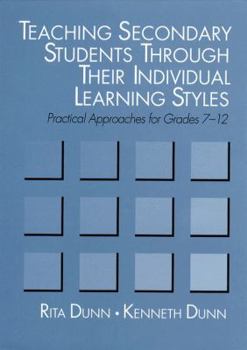Teaching Secondary Students Through Their Individual Learning Styles: Practical Approaches for Grades 7-12
Select Format
Select Condition 
Book Overview
No Synopsis Available.
Format:Paperback
Language:English
ISBN:0205133088
ISBN13:9780205133086
Release Date:July 1993
Publisher:Pearson
Length:496 Pages
Weight:2.20 lbs.
Dimensions:1.0" x 7.3" x 9.6"
Customer Reviews
1 rating
Handbook for teaching through learning styles
Published by Thriftbooks.com User , 23 years ago
For schools and teachers that are committed to implementing teaching according to the different learning styles, this is an important resource book. Detailed illustrations of various designs and techniques that will match the learning styles are given. It is important for teachers and administrators to first do the "Productivity Envrionmental Preference Survey (PEPS)" and for the students to do the "Learning Style Inventory (LSI)" which are available separately. Please note that "The inventory does not measure underlying psychological factors, value systems, or the quality of attitudes"(p.35). Table 2-1 gives a graphic overview of interpreting LSI profile. You get a good sense of the diversity among students. It is quite a daunting challenge to implement such a lerning-style based programme. The chart on p. 449 gives an overview of 4 stages. Some schools, with classrooms of 40+ students (e.g. in Hong Kong), may not have the physical space to incorporate the environmental changes required. Also where can we find in a regular school so many flexible and resourceful teachers who can creatively go beyond their usual learning and teaching styles? The awareness of the Dunns' comprehensive framework of learning styles is certainly most valuable and it helps us to be less judgemental and more respectful of individual gifts. I wonder if it would be an acceptable application to methodically stretch the whole class' learning styles, e.g., to be more visual or both global and analytic? Maybe more research can be done using these small steps of expanding one's learning and teaching styles.






